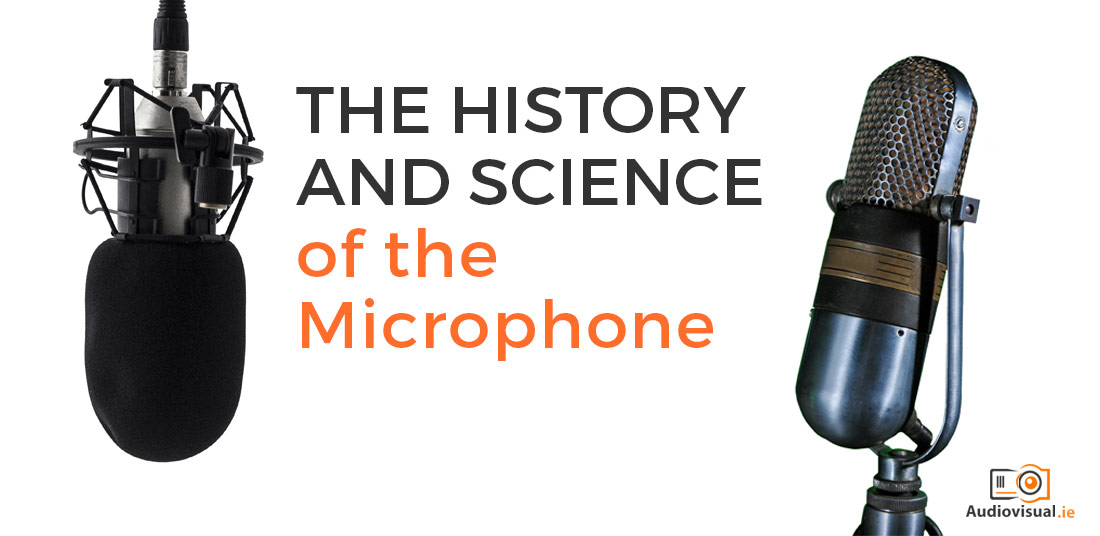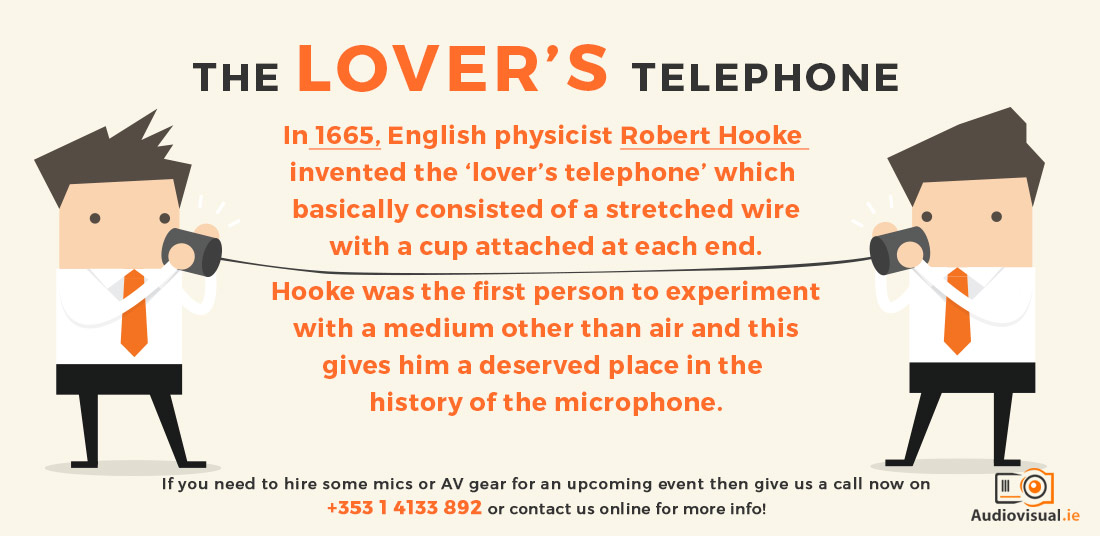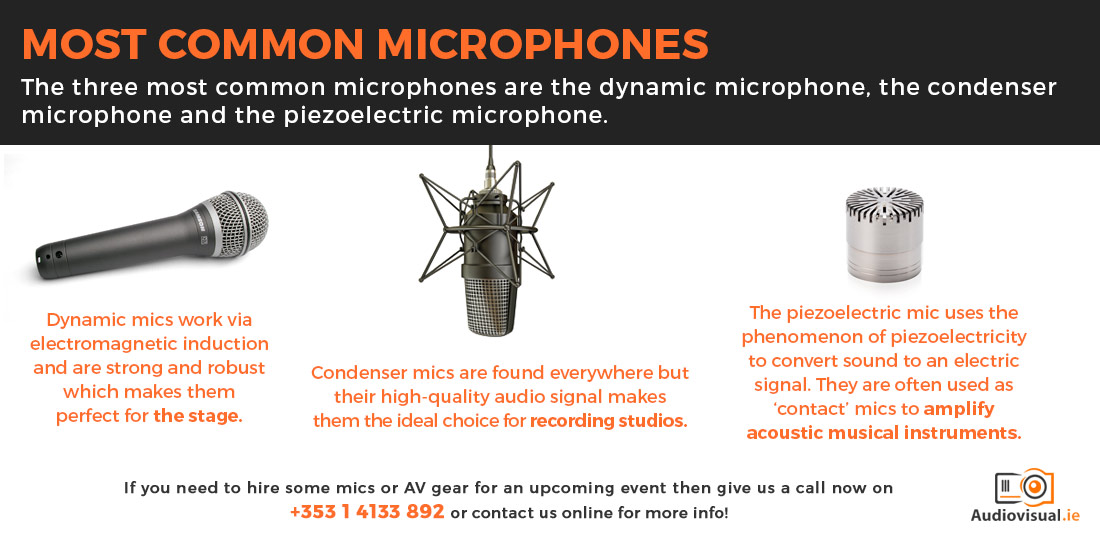
12 Apr The History and Science of the Microphone
When it comes to renting audio visual equipment, probably the last thing we think about is microphone hire. And yet it has such a large number of applications. It is used as part of a PA system for concerts, not just for the human voice but for drums and other non-electric instruments such as the saxophone and acoustic guitar. Indeed, it would be impossible to play a gig without microphones. Think of a concert without drums and vocals: microphones are at both the beginning and end of the music. For the same reason, it would be impossible to record an album without microphones. Microphones are also found in telephones, megaphones and hearing aids and are used in movie production as well as TV and radio broadcasting.
History of The Microphone
The microphone and voice amplifying technology have a very long and interesting history. The following is a brief overview.
An Acoustic Megaphone
It began with the megaphone. The earliest known usage of the megaphone was in ancient Greek tragedy which flourished around 2500 years ago. The need for the actors to be heard by the spectators in the amphitheatre prompted the invention of masks with horn shaped mouth openings which would amplify the voice – essentially an acoustic megaphone.

The ‘Lover’s Telephone’
In 1665, English physicist Robert Hooke invented the ‘lover’s telephone’ which basically consisted of a stretched wire with a cup attached at each end. You might laugh but Hooke was the first person to experiment with a medium other than air and this gives him a deserved place in the history of the microphone.
In 1876, Alexander Graham Bell invented the first telephone, which used microphone technology. However, the sound quality was very poor.
The Carbon Microphone
The first real microphone as we know it today was invented independently by Englishman David Edward Hughes and the Americans, Thomas Edison and Emile Berliner. After a long legal dispute, the first patent was awarded to Edison. The carbon microphone enabled proper voice telephony and is the prototype of today’s microphone. It was critical in the development of telephony, the broadcasting and the recording industries.
Converting Soundwaves To An Electric Signal
Today, there are many different types of microphone but they all do the same thing: convert a sound wave to an electric signal.

The three most common microphones are the dynamic microphone, the condenser microphone and the piezoelectric microphone.
- Dynamic mics work via electromagnetic induction. They are strong and robust and they have a high level of gain before feedback which makes them perfect for the stage.
- Condenser mics are found everywhere but their high-quality audio signal makes them the ideal choice for recording studios. There are two types: DC biased and HF (higher frequency).
- The piezoelectric mic uses the phenomenon of piezoelectricity – which is the ability of some materials to produce a voltage when subjected to pressure – to convert sound to an electric signal. They are often used as ‘contact’ mics to amplify acoustic musical instruments.
The Microphone Is One Of The Most Important Elements of AV Technology
The microphone is as essential today as it was to those Tragic actors who took to the stage in the theatre of Dionysus all those thousands of years ago. There may be more electric instruments on the stage such as guitar, bass and keyboard but it should be remembered that the most beautiful instrument of all is the human voice and for this reason alone the microphone is still one of the most important elements of audiovisual technology, especially in the context of musical performance.
If you need to hire some mics or AV gear for an upcoming event then give us a call now on +353 1 4133 892 or contact us online for more info!



No Comments